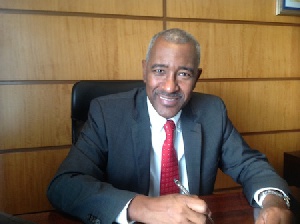More workers are expected to qualify for mortgages to buy homes, as the local currency stabilises and Treasury Bills (T-Bills) rate show a downward trend.
The Managing Director of HFC Bank, Robert Le Hunte, at the bank’s Annual General Meeting (AGM) in Accra said: “Treasury Bills (T-Bills) rate is coming down so I expect that interest rate on mortgage, generally in the market, will come down.
I don’t necessarily feel that five (5%) percent removal of VAT is the real reason for that, but I think mortgage rates are going to come down.”
According to the Bank of Ghana’s (BoG) Annual Percentage and Average Interest report, some banks charge as high as 40.3percent on mortgage loans in the country.
While the BoG does not publish data on the volume of mortgage loans, it is believed to be very minimal. Most estimates place the penetration rate at only around 3% --higher than Nigeria but well below that of many other markets on the continent, including South Africa and Morocco.
The country has been facing a significant housing shortage for some time now, with various industry estimates putting the deficit at roughly 1.7million units and growing at a rate of 70,000 units a year.
Many hard-working citizens don’t own a house or are unable to afford decent accommodation largely because of prevailing economic conditions and inimical housing polices.
However, the change in the fortunes of the local currency and T-Bills rate decline mean that workers who now earn between GH¢4,000-GH¢5,000 qualify to purchase a house priced at about US$84,000; thereby broadening the home-ownership band.
The Treasury Bill rates for the 91 and 182 days begun 2016 at 22 and 23 percent respectively, but reduced to 16.7 and 17.91 percent in January.
The rates have reduced even further and currently stand at 15.4percent for a 91-day treasury bill and 16.4 percent for the 182-day bill.
The cedi, as at March 10th, was trading at GH¢4.603 with the greenback on the interbank market, indicating a year-to-date depreciation of 8.6 percent -- the peak of the cedi’s troubled performance in the first quarter.
The sale of a three-year one billion cedis bond to only domestic investors at a yield of 21.5 percent proved a catalyst for the cedi’s turnaround; with the local currency regaining 1.3 percent of its value from March 10-17 to lower the year-to-date depreciation to about 7.4 percent.
At Thursday April 11th, the cedi was trading at GH¢4.2063 with the dollar on the interbank market, indicating a further gain and the lowering of the year-to-date depreciation.
The local currency as at Friday April 28, 2017, was trading at 4.1810 on the interbank market, indicating a period of stability against the greenback
Mr. Le Hunte, whose firm is a pioneer in the mortgage industry, however, explained that there is the need for consolidation in the industry, and that good policies were needed to stimulate home ownership, other than the removal of VAT on real estate.
“There is a lot more we could do to stimulate mortgages and I believe that mortgage interest rates need not, to some extent, open to market forces,” he added.
HFC performance in 2016
The bank and its subsidiaries recorded an 18percent rise in assets from GH¢1.6 billion to GH¢1.89 billion. Deposits also increased by 31 percent, outperforming the industry average of 25percent.
However, the bank and its subsidiaries recorded a widening loss after tax and non-controlling interest of GH¢47.73 million.
The loss position, according to the bank, was driven by one-off expenses; changes in mortgage NPL policy; and Bulk Oil Distributors (BDCs) portfolio.
“The liquidity position of the bank was also considered adequate for normal banking operations for review period. Management in line with the bank’s risk strategy adopted effective liquidity risk practices and kept a prudent level of liquidity,” said Charles William Zwennes, Board Chairman of the Bank.
He added that: “Our bank’s liquid asset to total asset ratio was 41.8percent at the end of 2016 as against 31.12percent at the beginning of the year.”
In the area of Capital Adequacy Ratio (CAR), HFC Bank ended the year with a CAR of 11.50 percent, above the regulatory minimum level of 10percent.
“The suspension of interest on non-performing loan portfolio and the current provisioning levels continue to adversely affect our CAR,” Mr. Zwennes added.
On the bank’s outlook for this year, he said, “remains positive as we continue to focus on building a solid balance sheet, controlling costs, improving recovery efforts and streamlining systems and procedures.”
Click to view details



Business News of Tuesday, 2 May 2017
Source: thebftonline.com

















